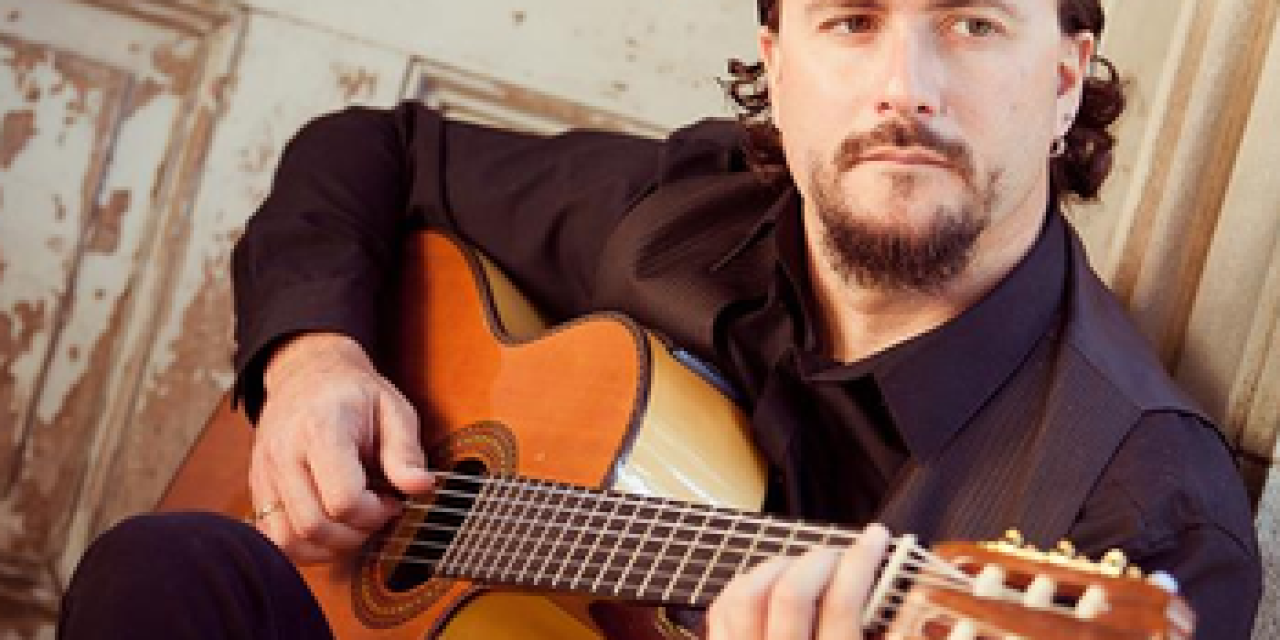Jazz guitarist and composer Marcelo Villanueva teaches music at the Baptist Seminary School of Music in Buenos Aires, Argentina. He also leads worship at the century-old First Baptist Church of La Plata. In this edited conversation, Villanueva talks about the changing role of worship leaders in Argentina.
People outside South America don’t always know that Argentina ranks eighth in the world for land area and is the world’s largest Spanish-speaking country. What else surprises them about Argentina?
Many people from North and Central America know something of my country, but in the rest of the world, little is known about Argentina. What attracts them is our spontaneity and emotional freedom.
At Seminario Internacional Teológica Bautista (SITB or Baptist Seminary), what trends have you noticed in whether students choose the School of Music or the School of Theology?
Many new students choose music careers. But many musicians also study theology because they are seeking a more pastoral orientation in their vocation. Music careers are growing, I think, because there is a lot of musical involvement in community worship in our congregations. Currently, SITB has 140 students enrolled in the School of Music and 200 enrolled in the School of Theology. During the last five years, the number of students has increased tremendously, especially in the School of Music.
How do the demographics of Argentina compare to the demographics of SITB?
Spanish explorers began colonizing our region in the 16th and 17th centuries. Spaniards brought African slaves to Argentina. Most people in Argentina today describe themselves as "descendientes de barcos," descended from ships. Between 1850 and 1955, only the United States had more immigrants from Europe than we did. Argentina now has more than 43 million people, and 92 percent of them live in cities. More than three-quarters of Argentineans identify as Catholic.
SITB students mostly come from low-middle class and urban areas in Argentina. In general, they are from Protestant denominations—Baptists, Pentecostals, Presbyterians, and Free Brothers [similar to Plymouth Brethren].
How is the role of worship leader changing in Argentina?
In the last several years, the role of director of worship has changed a lot, especially in charismatic churches. Twenty-five years ago in Baptist churches, the worship leader conducted people to sing together. About fifteen years ago some Baptists became charismatic. Now many worship leaders sing and perform their own songs in worship.
How has this change affected church worship?
With the influence of so many solo singers, worship can seem more like a concert. Also, some things that used to be important in Argentinean churches have been lost. Now there are even churches that don’t read the Bible in worship. Some churches have lost their history of singing hymns. That’s an important part of our history that we should incorporate again into our worship. In their origin, hymns were used for educational purposes. They have beautiful poetry and an enormous amount of theological content—which makes them vital for our Christian upbringing. Nowadays, by putting hymns aside, we are losing literary quality in church worship.
Have worship leaders’ roles changed throughout Protestant churches in Argentina?
No, it’s different in Reformed and Methodist churches. Music educators like Pablo Sosa have composed worship songs that relate to life in Argentina and are easy for congregations to sing together. But his songs aren’t on the radio, so they aren’t well known or sung beyond Methodist or Reformed churches.
I am a worship leader in a charismatic Baptist church, but I still make an effort to focus on congregational singing. And we try to teach that worship is much more than music. It is a way of life. It’s very difficult, but little by little we’re trying to compose and incorporate songs made in Argentina.
How much of Protestant worship is, as you say, “made in Argentina”?
I think that Argentina in general has always imitated foreign liturgical forms. The problem isn’t that we copy some things; it’s that we copy everything. Traditional churches mimic the Anglo-Saxon liturgy of the immigrant groups and missionaries that helped found them. Almost all the songs in charismatic churches come from Australia (Hillsong), Central America or North America (Marcos Witt).
The way Central Americans speak Spanish is different than the way we speak it in Argentina, yet we copy their singers and even the way they pronounce words. For example, the Spanish word yo [equivalent to I, the singular first person pronoun in English] is pronounced in Argentina more like jo. So people who say jo in other settings now sing it in church as yo.
Where do you see more contextualized worship in your setting?
We need a liturgy with its own elements. In this way, we will approach God sincerely, no longer imitating others. In Latin America, some worship ideas have been neglected just because the Catholic churches or other denominations used them. One idea—which has our own native elements in worship—could be for musicians to enter into the worship space while playing percussion instruments, dancing and inviting the congregation to worship God. This is typical of how Latin American indigenous communities worship in their services.
We see that indigenous people have transformed their culture as they worship God. Argentina’s largest indigenous group is the Qom people, also known as Toba and Toba from Chaco. They adapted their traditional circle song dances to praise God in worship. They also use their traditional instruments, like the nvique, a one-stringed fiddle often made of tin.
LEARN MORE
Learn more about Argentina’s ethnic and religious demographics. Connect with Marcelo Villanueva on either of his Facebook pages or his blog. Watch a short video on how worship can be transcultural, contextual, counter-cultural, and cross-cultural.

